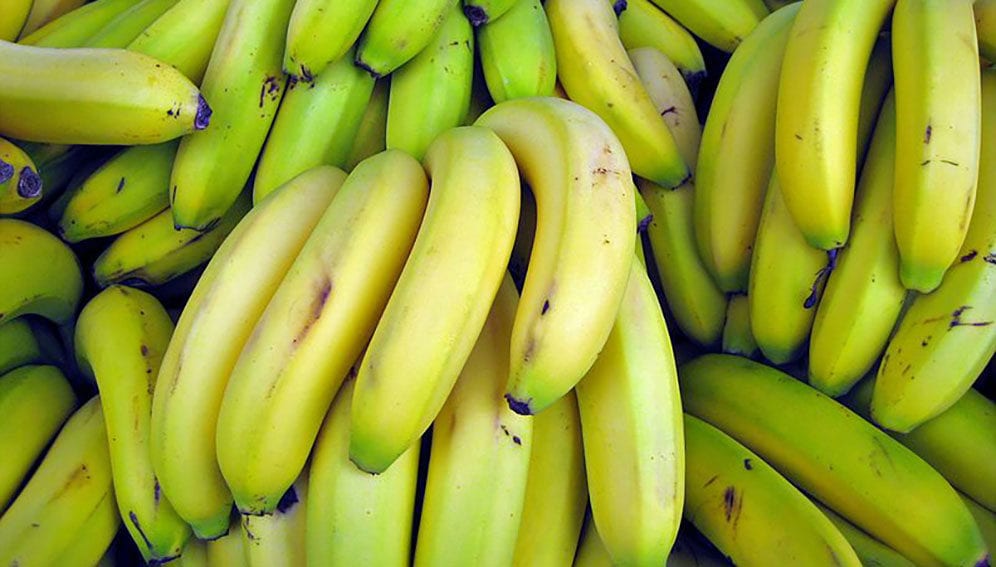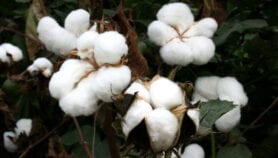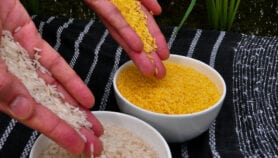01/09/19
GM tech expands with more crops to more countries

By: Paul Icamina
Send to a friend
The details you provide on this page will not be used to send unsolicited email, and will not be sold to a 3rd party. See privacy policy.
[MANILA] Recent developments in genetic modification (GM) technology include a way to prevent the popular Cavendish banana variety from being wiped out by the Fusarium wilt fungus, according to the latest report of the International Service for the Acquisition of Agri-biotech Applications (ISAAA) released last week (29 August) in Manila.
The Cavendish — which accounts for nearly half of all banana varieties grown in the world and most imports into Europe and the US — can be protected by splicing in genes from banana varieties resistant to the deadly Tropical Race 4 (TR4) strain of the Fusarium oxysporum fungus as well as a gene from a nematode worm, says the ISAAA report.
First identified in Taiwan, Malaysia and Indonesia in the early 1990s, TR4 has since spread to Africa and now threatens the vast banana plantations of Latin America. Left unchecked, TR4 may well cause the Cavendish to go extinct, threatening the livelihoods of 400 million people around the world who rely on this banana variety as food or as a source of income, according to FAO.
“GM will remain important since we have immediate problems to solve”
Paul Teng, ISAAA chair
Other recent developments in crop biotechnology listed in the report include GM sugarcane that is resistant to insects and drought, GM apples that do not turn brown, GM canola and safflower that have high levels of oleic acid which has anti-cancer properties. Similarly, GM potatoes do not bruise easily and, on deep frying, produce less acrylamide, a potentially cancer-causing chemical. GM potatoes are also resistant to late blight disease which caused the Irish potato famine in the 1840s and which continues to threaten potato crops worldwide.
In his presentation, Paul Teng, ISAAA chair and senior fellow at the Southeast Asian Regional Centre for Graduate Study and Research in Agriculture, contended that since the first GM crops were planted 23 years ago, no ill effects have been documented; the crops have enjoyed an “unblemished and proven safety record” and have expanded 113-fold from 1.7 million hectares in 1996 to 191.7 million hectares in 2018.
Teng said GM crops are “the fastest adopted crop technology in the world”, collectively earning some US$186.1 billion for countries that grew them from 1996 to 2016. “For 2017, the economic benefits were US$10 billion for developing countries and US$8.2 billion for industrial countries,” he said.
In the Philippines, farmers earn US$76 million a year from planting GM yellow corn resistant to the corn borer. GM yellow corn, grown mostly by smallholder farmers, continues to make more money than rice, said Saturnina Halos, president of the Biotechnology Coalition of the Philippines.
However, the adoption rates of the world’s top five GM crop-growing countries have reached close to saturation for some crops, Teng warned even as he pushed for the adoption of other GM crops and expansion to new areas such as in Africa.
In the US, the average adoption rate for GM soybeans, corn and canola has reached 93.3 per cent. In Brazil, the adoption rate for GM soybean is 93 per cent; in Canada it is 92.5 per cent and close to 100 per cent in Argentina.
In Asia and the Pacific, the adoption rate is 95 per cent for GM cotton in China, India and Pakistan, and 100 per cent in Australia, says Rhodora Aldemita, director, ISAAA Global Knowledge Center on Crop Biotechnology.GM crops have “expanded beyond corn, soybeans, cotton and canola to give more choices for the world’s consumers and food producers”, Teng said. He counted alfalfa, sugar beet, papaya, squash, eggplant, potato and apple among GM crops already in the market.
While it is too early to say what the crop expansion trends are going to be, Teng predicted that there will be a gradual adoption of gene editing technology.
“It (gene editing) is more acceptable since you do not add genes from another organism, unlike with GM, and that you work on one trait at a time,” Teng said. “But GM will remain important since we have immediate problems to solve; and with GM, we have traits that we need to use to solve them.”
This piece was produced by SciDev.Net’s Asia & Pacific desk.













